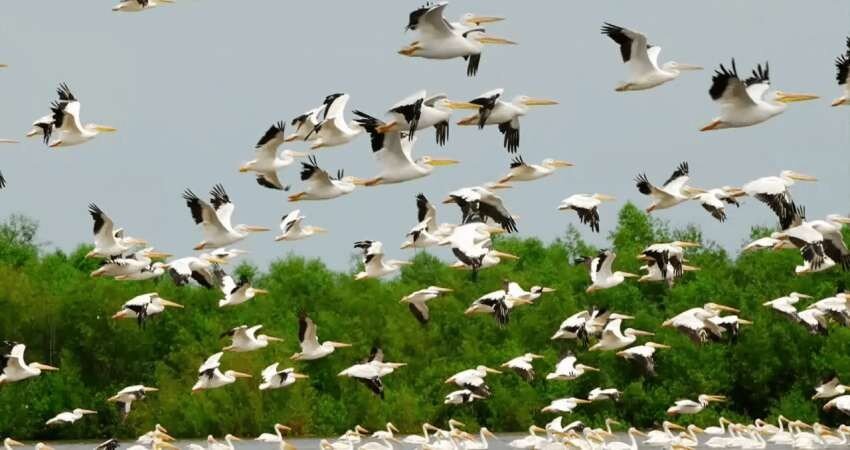Over 7% of aquatic birds on IUCN Red List

TEHRAN – According to the report of the national census, about 7.2 percent of the total population of aquatic birds are included in the Red List of the International Union for Conservation of Nature (IUCN).
The annual census for aquatic birds in Iran begins in the middle of the Iranian calendar month of Dey (December 22-January 20) and ends in the middle of the month of Bahman (January 21-February 19).
Statistics were collected from 446 bases across the country, 1,478,138 species of aquatic and waterside migratory birds were counted, of which a total of 39,275 were on the Red List of the IUCN, including Dalmatian pelican, lesser white-fronted goose, red-breasted goose, common pochard, marbled duck, white-headed duck, Siberian crane, and great knot.
Overall, about 7.2 percent of the total population of aquatic and waterside birds were included in the IUCN Red List.
A total of 39,275 birds, including Dalmatian pelican, lesser white-fronted goose, red-breasted goose, common pochard, marbled duck, white-headed duck, Siberian crane, and great knot, are on the Red List of the IUCN.
The largest population of migratory birds on the IUCN Red List belonged to the common pochard species with a population of 27,784 and the lowest population belonged to the two species of Siberian crane (one) and the great knot (forty-four).
Gilan, Mazandaran, and Golestan provinces hosted the largest population of migratory waterfowl and shorebirds in the winter of the [Iranian calendar year] 1400 (January-March).
Every year, with the participation of about 15,000 forces, many of whom are volunteers, migratory waterfowl and shorebirds are counted in more than 100 countries.
Iran’s bird species
Hosting over 600 species of birds, Iran is a climatically rich country, so it is said that the number of bird species in Iran is higher than in the whole of Europe. A wide range of wetlands is the reason behind migratory birds choosing Iran for an annual wintering habitat, as a large number of birds fly a thousand miles each year to benefit from this rich climate.
Every year, from early September to late February, Iran hosts rare species of migratory birds heading from north to the southern countries due to reduced seasonal temperatures and food availability.
It is estimated that there are about 50 billion birds in the world out of 9,000 species, many of which are migratory. Accordingly, about five to seven million birds migrate to Iran in different seasons. There are about 530 species of birds in Iran, 320 of which are migratory species, some of which are native species.
Among the various groups of migratory birds wintering in Iran, the largest population belongs to the group of geese, swans, and ducks amounting to 781,499 and the smallest population of seven are the long-tailed ducks or oldsquaw.
The provinces of Mazandaran and Golestan are the first provinces with the highest number of migratory birds for having sufficient resources, as the movement of migratory birds is closely linked to the seasonal availability of resources.
FB/MG
Leave a Comment